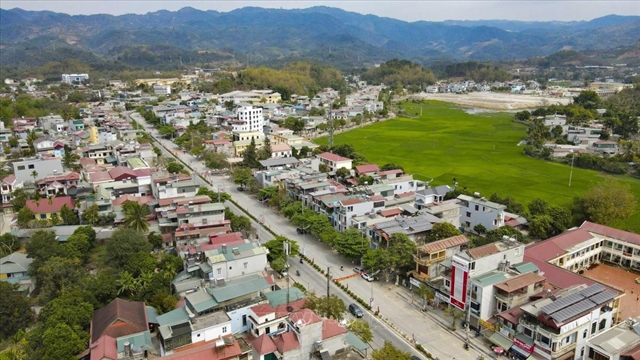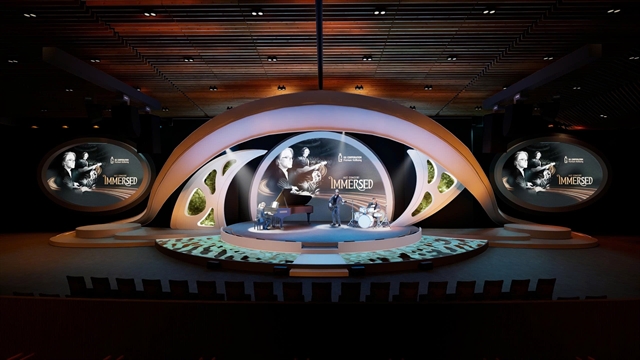 Life & Style
Life & Style
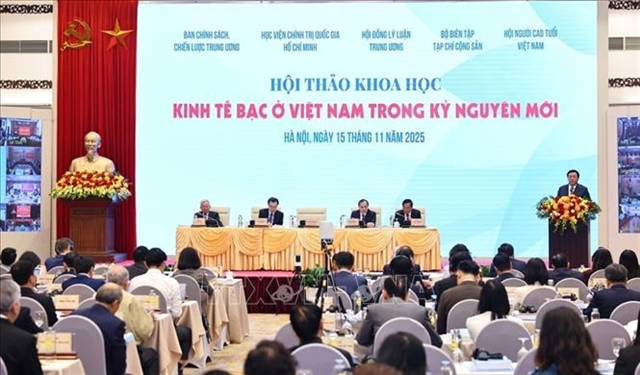
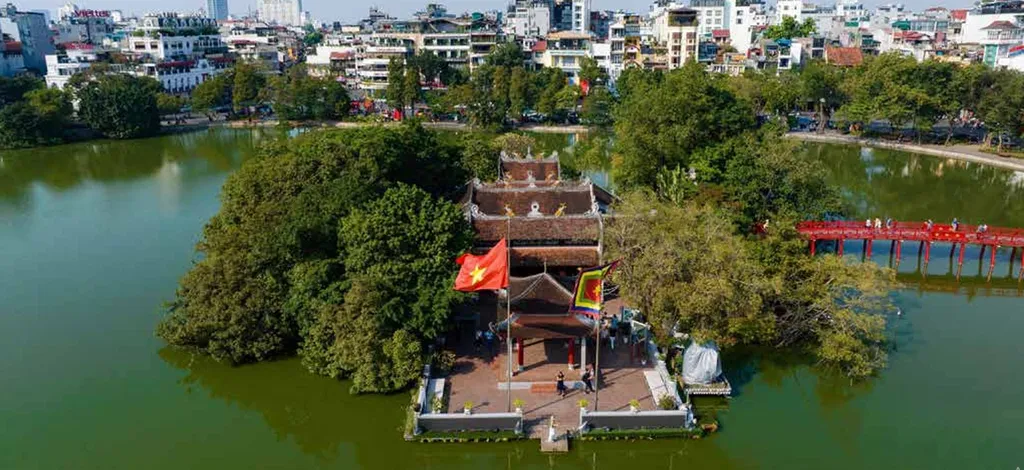 |
| ICONIC: A corner of Hoàn Kiếm Lake with Ngọc Sơn Temple and Thê Húc Bridge, three famous landmarks of Hoàn Kiếm District in the heart of Hà Nội. Photo courtesy of Hữu Thắng |
By Thanh Hà
A modern, dynamic and youthful city ranked the cheapest city for art and culture. Those are some of the reasons why Hà Nội is ninth among the world’s 20 greatest cities for art and culture this year, according to the UK's renowned Time Out magazine.
It also highlighted the Old Quarter and Returned Sword Lake, two must-visit destinations in Hoàn Kiếm District in central city, which offered a rich blend of history and culture, featuring various iconic landmarks.
Born and growing up in Hà Nội, I have driven around the legendary lake countless times, but until taking a tour in an electric car I found the district much more interesting and beautiful than ever.
A half day on the ride, I found that whether exploring ancient temples, enjoying delicious street food or relaxing by the lake, this district captured the essence of Hà Nội.
It took just several minutes to complete a lap of Hoàn Kiếm (Returned Sword) Lake. The tour guide told visitors historic stories, including the legend of the "Lake of the Returned Sword".
"The lake is not only a historical landmark but also a symbol of Vietnamese people's enduring desire for peace, wisdom and virtuous governance," the tour guide told us.
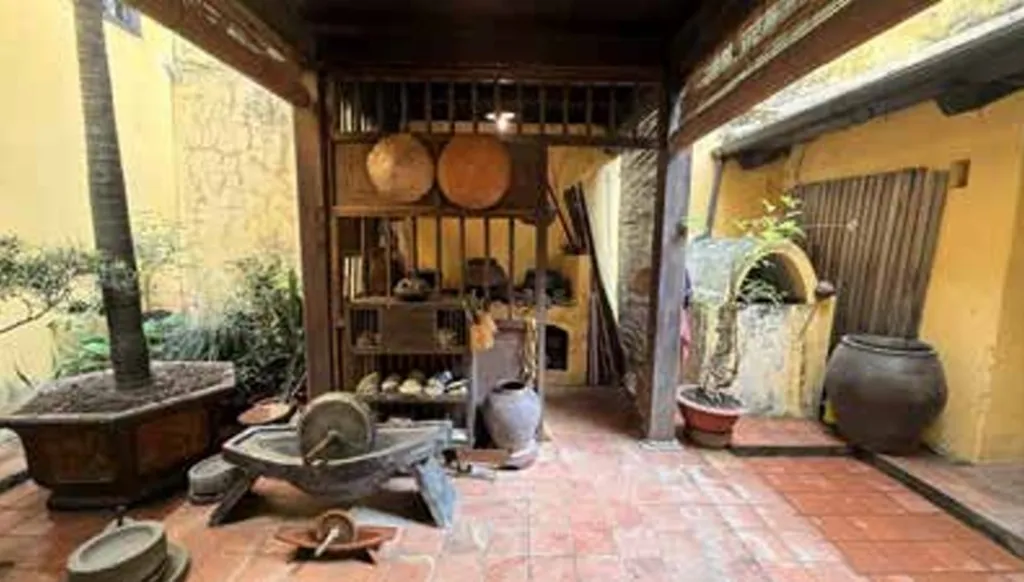 |
| LOOK TO THE PAST: The kitchen of the Heritage House at 87 Mã Mây, one of the oldest buildings in the Old Quarter. VNS Photo Ngọc Bích |
"The lake is our treasured cultural and architectural heritage site, a timeless gem in the heart of the city. Its serene beauty has become a defining feature of Hà Nội," he added.
The guide also reminded us about different landmarks around the lake such as Turtle Tower, Ngọc Sơn Temple, Thê Húc Bridge, Pen Tower, Bà Kiệu Temple and Hòa Phong Tower. All are thoughtfully arranged according to the principles of feng shui.
Leaving the lake, the car took us to discover the Old Quarter, which functioned as a vibrant residential and commercial centre located in the east of the Imperial Citadel of Thăng Long.
Previously home to dozens of specialised craft guilds, the area has retained over 100 historical, cultural and revolutionary relics along with numerous ancient houses.
One of them is at 87 Mã Mây Street, which was named Mã Mây Heritage House.
"It is a significant example of traditional Hà Nội architecture and distinctive building technique, constructed in the late 19th century," our guide said, while leading us inside the house to tell us about past owners' lifestyle and activities.
The house's rooms, mezzanines and courtyards were all well-designed to meet the living needs and for its dwellers’ convenience.
 |
| INTRICATE WORKS: An artisan at Chuôn Ngọ Village works on a mother-of-pearl inlay and offers up stories of his craft. VNS Photo Ngọc Bích |
It was divided into different spaces along its tubular shape, including a shop to sell goods, a warehouse, a kitchen, a backyard with jars for storing rain water and rooms for sleeping and worshipping rituals.
The house, which was mainly built of wood to be cool in summer and warm in winter, was recognised a national heritage in 2004.
Kim Ngân Communal House on Hàng Bạc Street was our next stop, as it was one of the oldest and largest of its kind in the Old Quarter.
Hàng Bạc Street was known as a centre for the goldsmith community. The communal house was built to honour the deities and founders of the goldsmith craft, along with an annual festival that features solemn rituals and vibrant cultural activities.
Next up was the Cultural and Arts Centre at 22 Hàng Buồm Street.
Originally known as the Cantonese Assembly Hall, it was established by the Cantonese community who came from China about 400 years ago for trade and settlement.
"Despite time and many changes, the historic building has remained standing. After a restoration initiated in 2018 and completed in 2021, with its unique architectural features retained, the building was officially named as it is today," the guide said.
 |
| Artisans are often invited to demonstrate their craft at the Cultural and Arts Centre. VNS Photo |
With its distinctive and visually striking design, the building has become a prominent venue for cultural and artistic events, offering a platform for captivating exhibitions.
On special occasions, many local artisans would be invited to perform traditional crafts such as bamboo and rattan weaving, embroidery, and making conical hats and toy figurines made of rice dough.
The Old Quarter Cultural Exchange Centre was also a highlight on the tour. Inaugurated in 2015, it is a prominent venue for presenting the historical significance and heritage of the Old Quarter.
"Here, visitors can regularly witness traditional craft demonstration and have a deeper understanding of the area with a permanent exhibition which tells people all about the Old Quarter's history across periods in Vietnamese, English and French," the guide said.
 |
| An artisan of Chuôn Ngọ Village works on a mother-of-pearl inlay piece while also telling stories of his craft. VNS Photo Ngọc Bích |
Luckily, when we arrived, we were welcomed with a music performance using traditional instruments and served with local sweets such as young rice cakes, Vietnamese donuts and peanut candy, which went perfectly with a cup of tea.
We also had an opportunity to witness three artisans from Chuôn Ngọ Village working on and displaying their mother-of-pearl inlay art works.
Each of them took care of different stages such as cutting shells, drawing motifs, carving outlines, polishing surface and inlaying. Under their exceptional craftsmanship, many beautiful works were created, while they told us interesting stories of their home village and the history of their craft.
The final destination was Chả Cá Thăng Long Restaurant for lunch.
 |
| Grilled catfish rounds off the half-day tour around the Old Quarter in the best way. VNS Photo |
Opened for over 30 years, it is famous for the Hà Nội speciality of grilled deboned catfish with dill, green onion and turmeric that we combined with vegetables, rice noodles and sauces.
The restaurant excels with its genuine welcome, nice seating and delicious food. It was the best way to end a great tour in the thousand-year-old city. VNS


